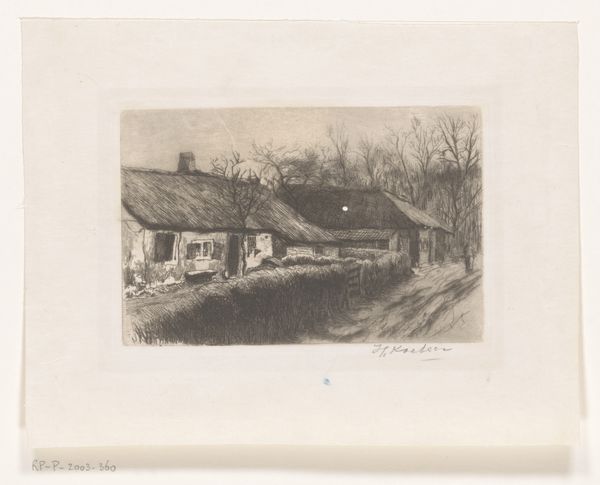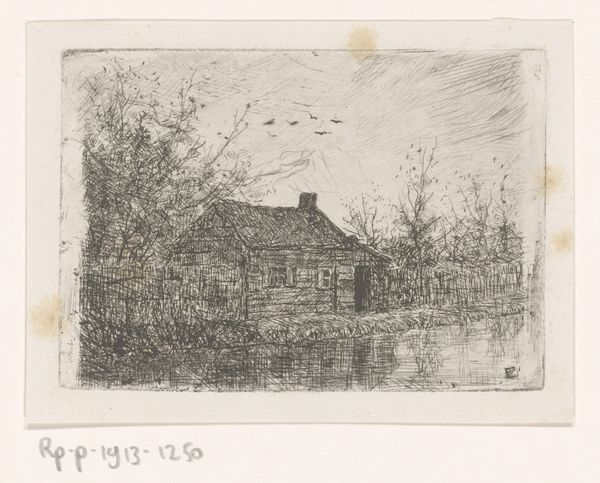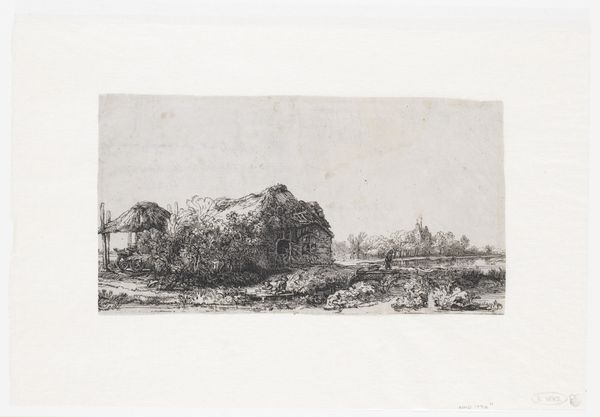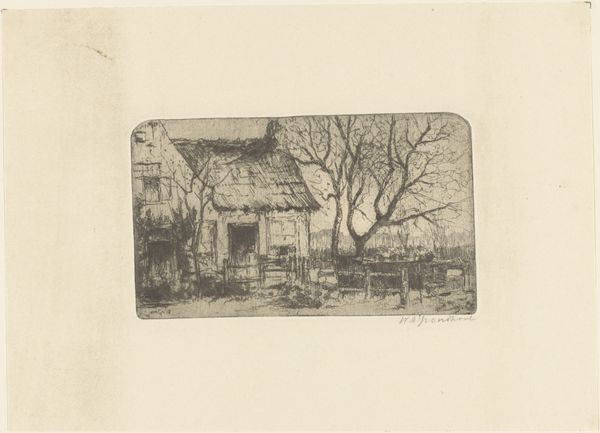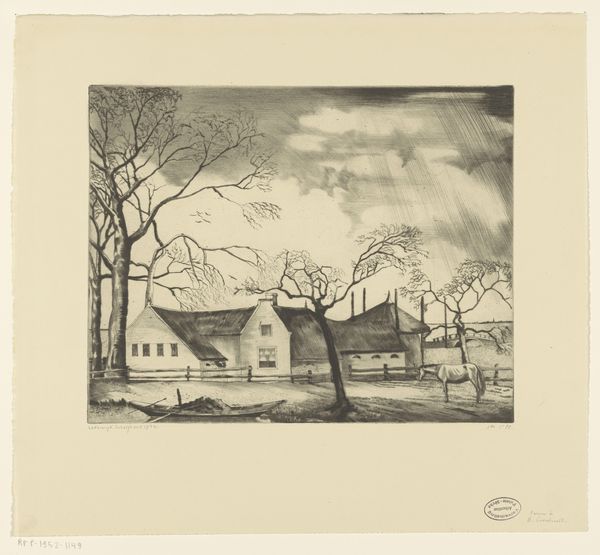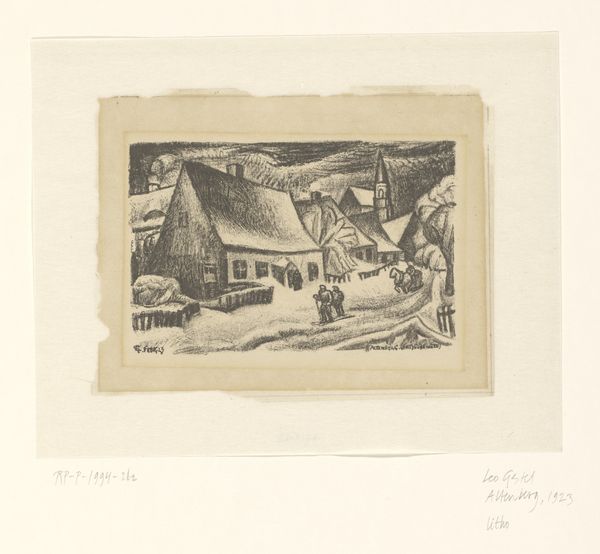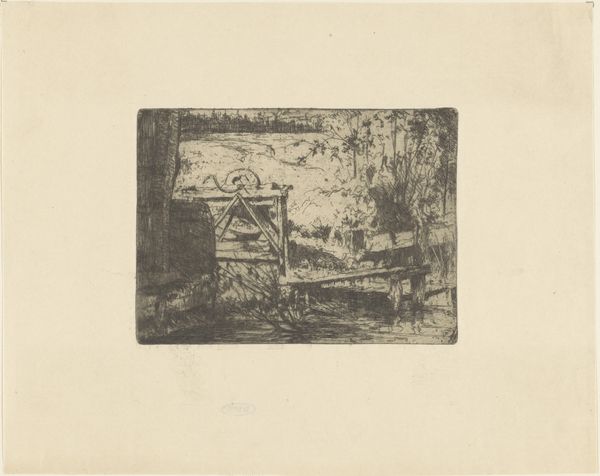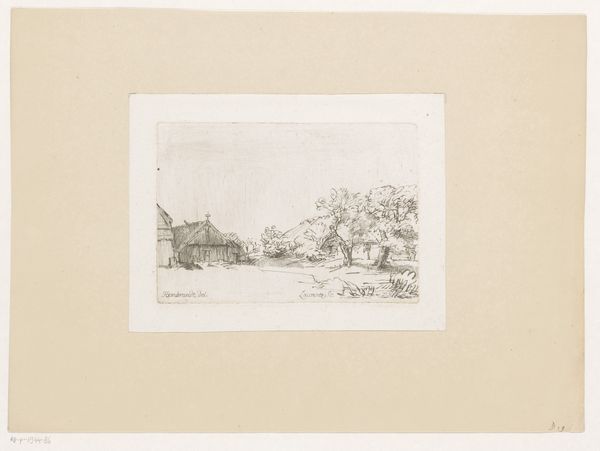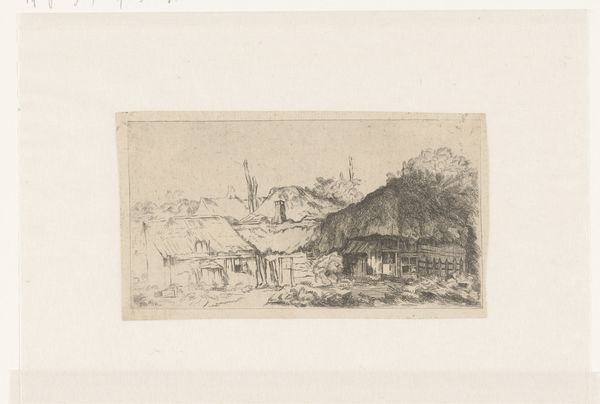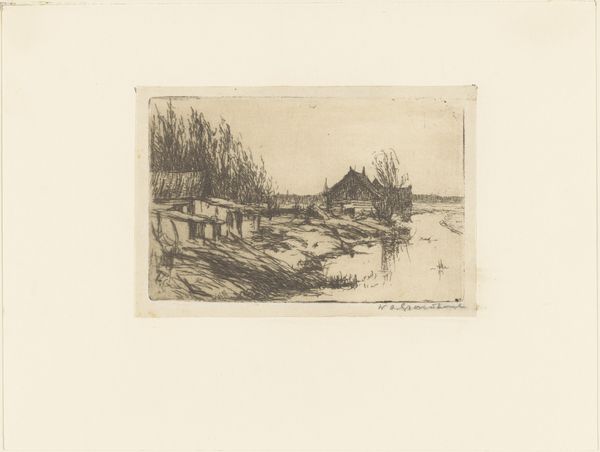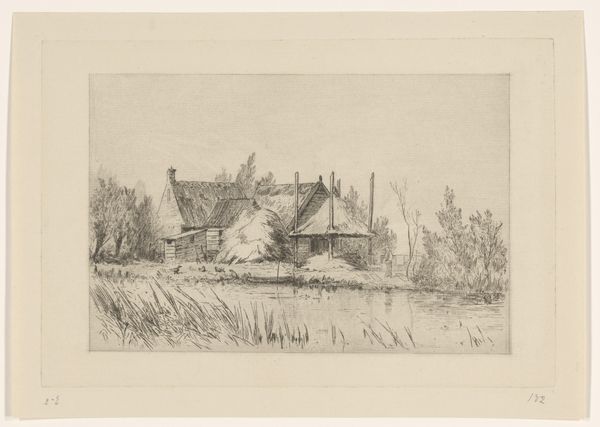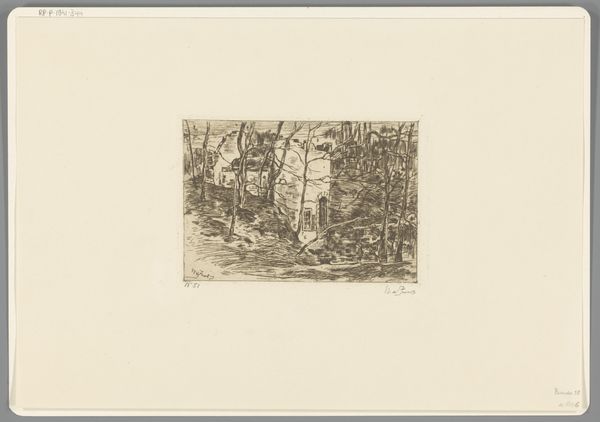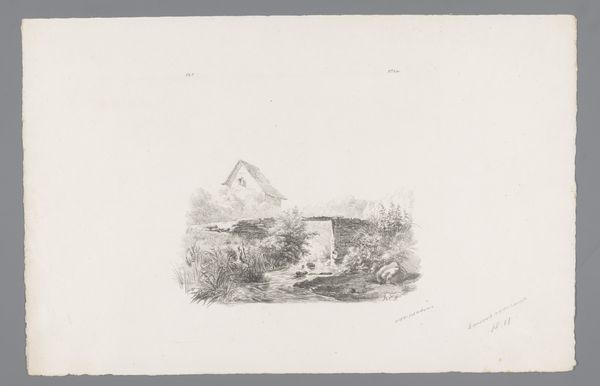
Dimensions: height 119 mm, width 157 mm
Copyright: Rijks Museum: Open Domain
Editor: This etching, "Gezicht op de Trapjesschans in Amsterdam" by Frans Schikkinger, made sometime between 1848 and 1902, is quite striking! It's so detailed, yet evokes a certain... stillness. What symbols or stories do you think are embedded in this seemingly simple image? Curator: The enduring appeal lies, perhaps, in its invocation of home. Notice how the smoke rises, connecting hearth and heaven. These structures, solid and slightly askew, speak of human resilience against the elements. Does the slightly blurred technique remind you of something? Editor: I hadn't considered the blurred effect to be a feature, but you're right! It is quite prevalent... a visual softness... Perhaps the passing of time is itself embedded as a symbol. How might Amsterdam's identity be intertwined with this imagery of dwellings and daily life? Curator: Exactly. The image subtly encodes a sense of community rooted in the ordinary. Notice, the bridge - not just a functional passage, but also an archetypal connector. Amsterdam's rise to prominence hinged upon such unassuming arteries. Isn't it interesting how Schikkinger shows this particular scene and framing from reality? What impact might have it had? Editor: I guess that depending on what viewers were already thinking, perhaps this would inspire more unity among the working class as a result of romanticizing their homes and struggles. It definitely helps appreciate daily life, I think. Thank you, that was insightful! Curator: My pleasure! Consider next time how symbols and setting interrelate, as culture continually imbues meaning into seemingly common vistas, even after time passes and Amsterdam modernizes, perhaps its original roots remain intact in small sectors such as this.
Comments
No comments
Be the first to comment and join the conversation on the ultimate creative platform.
